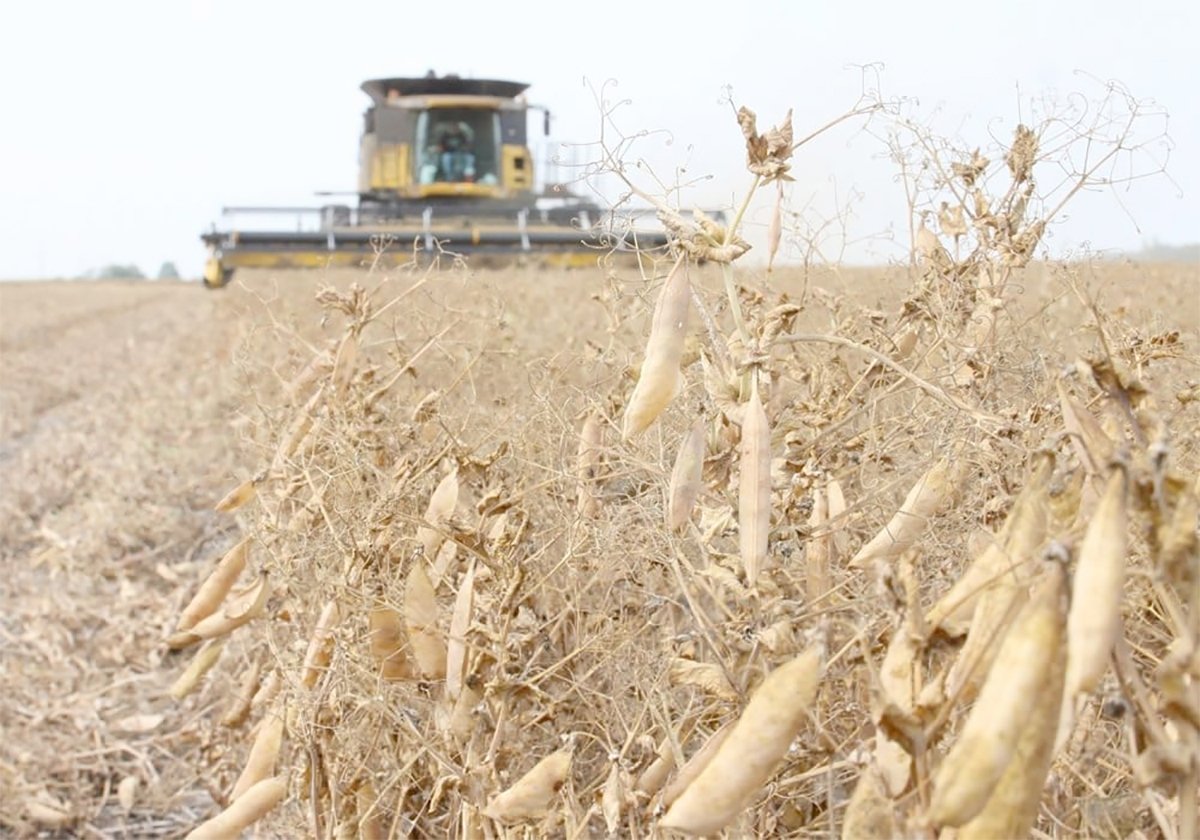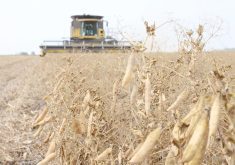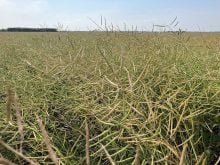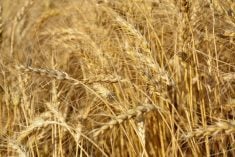Family garden, shelterbelts and road allowances dying? Neighbors plowing a full width between your crop and theirs? You may have a spray drift problem.
There are some new systems to reduce drift, including adjuvant spray in which polymer compounds are added to spray mediums; low drift or hydraulic nozzles that produce standard coarse droplets; and twin product nozzles that place high pressure air along with the spray product for variable control.
Each application style has its problems, but all have advantages over traditional technology, say agrologists and researchers.
Read Also

Chinese, Indian tariffs take toll on pea prices
The disruption of pea exports from Canada’s largest customers will likely result in slow pea exports for the remainder of the crop year.
“You can reduce drift 50 to 90 percent. That means more hours of spraying as producers extend the window of application times and opportunities,” said Tom Wolf, of Agriculture Canada’s Saskatoon Research Centre.
Coarse droplets that don’t carry far can be created using anti-drift tips such as Spraying Systems DriftGuard, TurboTeeJet or Lurmark. But droplets that are too heavy rebound from plant leaves so a compromise has been found with the addition of air to the droplets.
Drips don’t bounce off
Air is added to the droplets through venturi, a small hole located in the valve body, at the point where the first atomization occurs. This causes the finest drops to group together and surround the tiny air bubbles. Sprays using this approach tend not to drift as much and drops break up rather than bounce when they hit the plant leaves.
Called the Turbo Drop, manufactured by the German company Agrotop, these nozzles have been tested by the United States Department of Agriculture branch in Stoval, Mississippi.
“There was a significant reduction of extra fine droplets produced through higher volumes or pressures. The ‘fines’ tend to drift, but when combined with air, the size and mass of all droplets are increased and ‘fines’ are nearly eliminated,” said the USDA study.
The design also allows the use of smaller than normal nozzles for better leaf coverage.
“These can reduce drift by 90 percent over the conventional fan spray nozzles,” said Wolf.
“The Turbo Drop type nozzle provides the air mixing without the cost of an air-assisted boom system,” said Dennis Gardisser, an agricultural spray engineer and extension specialist with the University of Arkansas.
Air-assisted systems combine compressed air with the spray product. This allows the operator to control the droplet size without reducing the volume of liquid sprayed, all the while giving the operator control from the cab of the tractor or sprayer. The cost of this system is similar to drift reducing spray equipment that electrically charges the product with an opposite charge to that of the plant leaves.
While effective and convenient, a parallel flow system requires more maintenance and additional initial costs.
No magic answers
Wolf is testing most of these systems but cautions producers that new technologies aren’t magical and can’t solve all drift problems.
The most important component of any sprayer is the operator. Sprayer configurations and strategies can also affect how well a product works.
It might seem like common sense to get the sprayer to the field as the summer sun rises, before the wind rises. But it might not always be the best choice.
Thermal inversions in the calm, early morning can carry a large portion of the atomized product upward. To avoid thermal inversions, Wolf suggests waiting until air temperatures rise at least 2 C.
Drift can also be managed by increasing carrier volume. Wolf suggests that by doubling the water volume from five gallons per acre to 10, two-thirds less drift is produced.
Because of higher water use and the need to change sprayer tips more often, the system is probably best used for high sensitivity areas such as around farmyards, water sources and touchy crops.
Rotating nozzle turrets can lengthen the time between switches.














